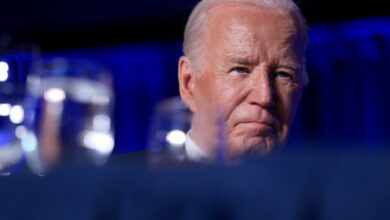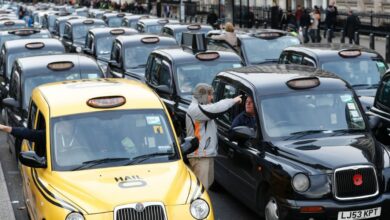How does the Kate Middleton saga affect the royal family’s $28 billion empire?

You might not care about Kate Middleton, or be able to tell the Prince of Wales from Paddington Bear. For plenty of Americans, the public-relations meltdown that besieged the British royal family this week barely registers as a scandal. But here’s a case for caring about the travails of the Windsor clan—aside from being one of the most powerful monarchies in the developed world, the Windsors’ empire is worth $28 billion. And the public uproar this week over how they handled a badly photoshopped image along with the disappearance of their most popular member is showing the cracks in the family’s once-impenetrable facade.
The Photoshop debacle is just the latest in a series of flubs that have led to a popular mistrust with royal media and with the monarchical institution itself. As concern over Kate Middleton’s whereabouts grows, it’s not just public perception that’s at stake for the royal family—the discontent could have an impact on the family’s vast wealth.
“The royal family’s business holdings encompass vast estates, real estate, and investments. While not a ‘business’ in the traditional sense, their assets are influential, contributing significantly to their wealth and the UK economy,” Stacy Jones, founder and CEO of pop culture branding firm Hollywood Branded, tells Fortune. What’s more, “their influence extends beyond mere financial impact—it shapes cultural and societal norms.”
Where does the British monarchy get its money?
“The Firm,” or the most senior members of the royal family, are the faces of a $28 billion empire that includes vast real estate holdings across the United Kingdom such as The Crown Estate, The Duchy of Cornwall, and The Duchy of Lancaster, the latter two of which generate private income for the monarch.
The Duchy of Cornwall is currently overseen by Prince William, as the eldest son of the British monarch (King Charles). The main operation of this duchy is to manage the monarchy’s land holdings in England, which amount to about 135,000 acres. While William isn’t allowed to sell any of the duchy’s assets for personal gain, he still gets the annual revenue the land holdings generate. The duchy’s assets as of 2022 were about $1.5 billion.
The Duchy of Lancaster, meanwhile, is a private estate consisting of a portfolio of lands, properties, and assets held in trust for the sovereign. It includes rural estates, farmland, urban developments, historic buildings, and commercial properties in England and Wales. As of 2022, the estate was worth roughly $831.5 million, and generates $25.5 million in profits each year.
“There’s an argument to be made that the royal family are the most important and influential people in all of England, other than the prime minister,” Evan Nierman, founder and CEO of crisis PR firm Red Banyan, tells Fortune. “These are not ordinary people. They control enormous assets of incalculable value.”
On top of the royal family’s properties, they also earn funding from the Sovereign Grant, or the taxpayer-financed fund that pays the monarch for their official duties. For 2022-2023, King Charles made the equivalent of almost $109 million from that grant, which is used to fund the upkeep of their properties, pay staff, and cover the cost of other royal duties like speaking engagements and visits.
Even Buckingham Palace admits that the British monarchy “has sometimes been described as an expensive institution, with royal finances shrouded in confusion and secrecy.” They add,“the royal household is committed to ensuring that public money is spent as wisely and efficiently as possible, and to making royal finances as transparent and comprehensible as possible.” But many taxpayers disagree. Naysayers argue that public money could be spent on other things to benefit the public, like hiring more nurses and teachers. Others say the cost of the monarchy is also a diss to the cost-of-living crisis in the U.K.
Still, it’s difficult to exactly calculate how much the royal family is worth to the UK—after all, for all their reliance on the state, their celebrity status brings in media, creates memorabilia, attracts tourism, and generally fuels attention to the country. That’s why the PR crisis involving Kate Middleton could be particularly damning to their public perception long-term, and thus diminish their business and economic impact.
I missed it. What exactly is going on with Kate Middleton?
If you haven’t seen the conspiracy theories swirling around social media and the news this week about Kate Middleton, you must’ve slept better than all of the amateur sleuths out there.
In mid-January, Kensington Palace released a statement informing the public that the princess would be out of the public eye through Easter (the last weekend of March) for “planned abdominal surgery.” But the news was immediately met with skepticism, and mistrust in the palace only grew during the past two weeks after the release of some dubious photos of Kate.
First, TMZ published a pixelated photo of a woman who appeared to be Kate wearing sunglasses in a car with her mother, Carole Middleton. But it was the photo released Sunday by Kensington Palace for U.K. Mother’s Day that really caused a stir. It showed the Princess of Wales with her three children (Prince George, 10; Princess Charlotte, 8; and Prince Louis, 5); it was subsequently killed by the AP, Getty Images, Reuters, and other major news outlets after evidence emerged that it had been manipulated. Between news organizations, photo experts, and online observers, dozens of errors were pointed out in the photo. On Monday, Kensington Palace released a statement on X from Kate taking the blame for editing the photo.
Then, just hours after the statement, the Daily Mail released a photo of Kate and William in a car. William was said to be on the way to Westminster Abbey for the annual Commonwealth Day service, but Kate was heading to a “private appointment,” according to the Daily Mail. This photo was also particularly blurry and showed only the back of Kate’s head. Online observers have studied this photo and allege that it, too, was manipulated somehow, drawing comparisons to a past photo of the princess and saying that her image had been Photoshopped into that picture.
The steady drip of doubts, amplified by Kensington Palace’s blunders, is now threatening to erode the goodwill that the royals have enjoyed.
“Any perceived misstep or scandal” could impact the family’s financial holdings by decreased public support, according to Jones. Simply put, tax payers may not be as willing to shell out money for an institution they don’t trust.
“The number one rule of public relations is to never lie,” Kyle Ankney, head of public relations at Wisteria PR, tells Fortune. “And in a world where the general public is better than ever at discerning truth from fiction, it’s very possible that the recent communications or lack thereof from the palace, may have lasting impacts on all facets of their businesses and public perception.”
Ankney sees only two ways the royal family can move past this. The first would be saying nothing and hoping that things “return to a level of normalcy in time,” or they can give a complete debrief with all of the facts of the situation when the time comes.
Mistrusting Middleton—and the press and the palace
It’s entirely possible that there’s nothing more to the Kate story—that she simply had surgery and needs time to rest. What seems less possible is that the public trust in the royal family will return to its once-high levels.
“Every single move the royal family makes is highly scrutinized by the public,” Nierman says. “While their estates are not going to be significantly threatened by a PR crisis, the issue is that it will shape the way society views them. They then need to spend enormous amounts of time and energy diffusing crises such as the ones caused by Harry and Meghan—and now with Kate’s Photoshop scandal.”
Other experts, however, don’t think this crisis will damage the royals’ reputation forever.
The Kate debacle “will cause a short-term interruption in trust, but if there are no new errors by the Royal Family, the trust will [be] rebuilt in a year,” Eric Schiffer, chairman of Reputation Management Consultants, tells Fortune. In fact, Schiffer says he predicts Kensington Palace “will avoid new self-imposed errors and refocus on advancing issues and policies meaningful to the public.”
Another unique relationship at play is the royal family’s relationship with the press, which has historically been quite “symbiotic,” Jones says. But it’s a delicate balance.
“Without the adoring, loving coverage, the royals have less of a fan base. Without fodder that keeps the news machines churning, no one pays attention to the multi-billion dollar media machine,” Jones says. “The Royal Family often seems to perceive the press’s coverage as unfair or invasive. However, they are symbiotic, and indeed do need one another. The monarchy has evolved to adapt and manage its relationship with the media.”
But news organizations have now started to mistrust the information fed to them by the palace. Indeed, AFP, a news agency based in France, has labeled Kensington Palace as “absolutely not” a “trusted source” after the Kate Middleton photoshop scandal.
“Any perceived manipulation can quickly escalate into controversy,” Jones says. Then add on the rapid spread of information which requires swift responses to controversies and misinformation. The pedestal to fall from is now even higher.”
Source link




